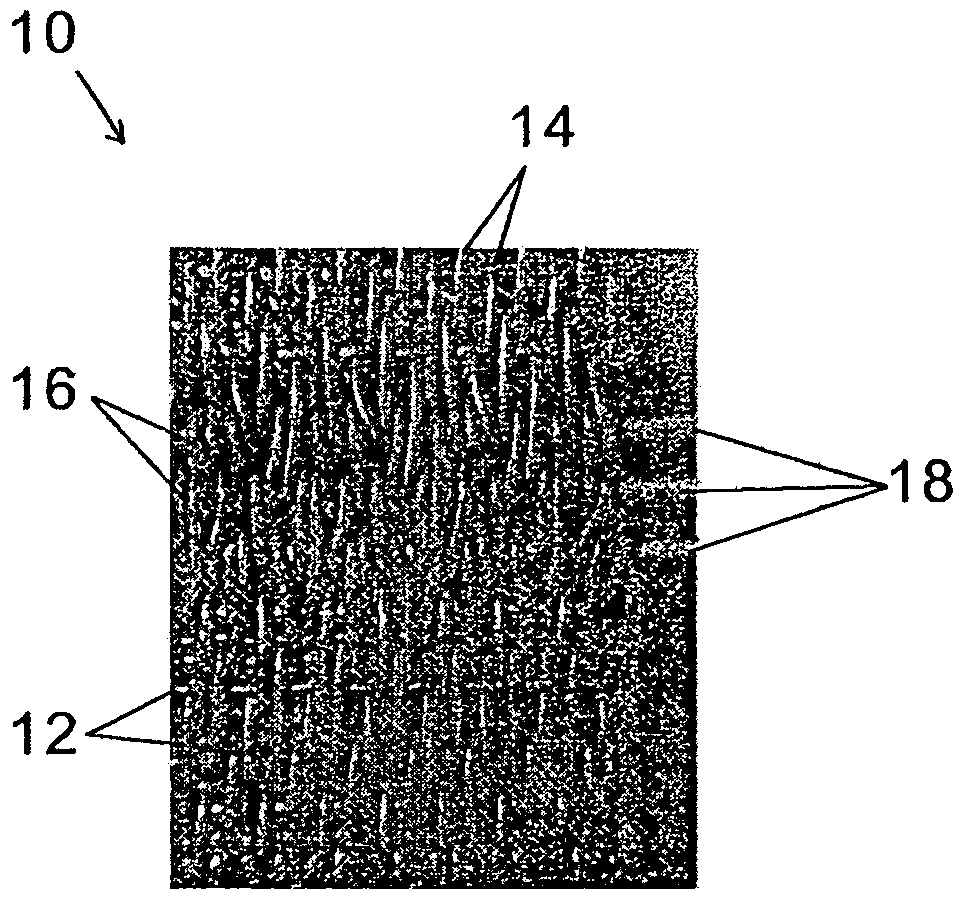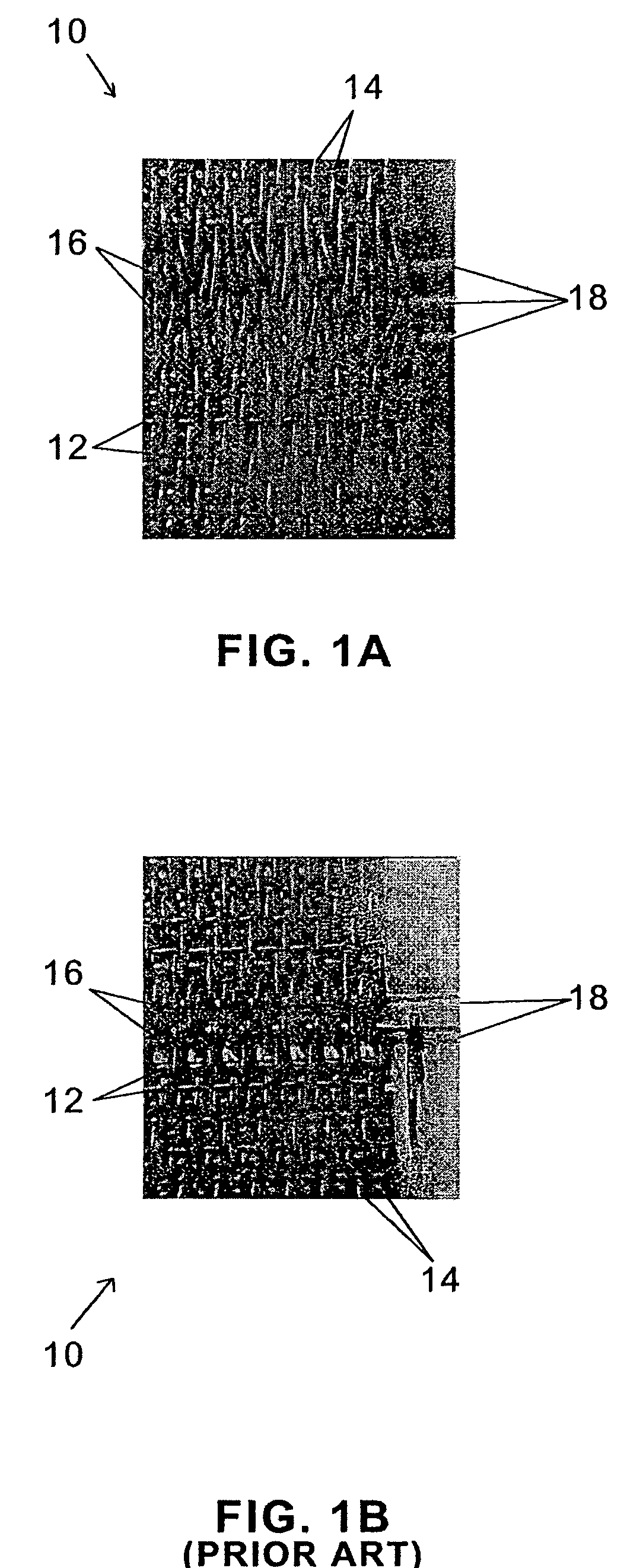Multi-pin pin seam for an industrial fabric
a multi-pin, industrial fabric technology, applied in the field of industrial fabrics, can solve the problems of discontinuity on the fabric surface, inability to use plastic monofilaments, and inability to meet the needs of production, so as to reduce or minimize discontinuity, reduce or minimize the risk of abrasion in the seam area, and reduce or eliminate the effect of discontinuity
- Summary
- Abstract
- Description
- Claims
- Application Information
AI Technical Summary
Benefits of technology
Problems solved by technology
Method used
Image
Examples
Embodiment Construction
[0030]Referring now more specifically to the drawing figures, one embodiment of the invention is shown in FIG. 1A (plan view), FIG. 2A (cross section), and FIGS. 3C–3E (cross section). In general, the triple pin seam illustrated in these figures results in less of a discontinuity on the surface of the fabric 10, compared with the prior art double pin seam. This is clearly illustrated in a comparison of FIG. 2A to FIG. 2B, which show seaming loops that stay aligned in FIG. 2A and seaming loops that deviate from the fabric face in FIG. 2B. Accordingly in FIG. 2A the weave pattern in the seam area conforms more closely to that in the rest of the fabric 10 than that practiced in the prior art. Consequently, marking of a product transported on the fabric 10 and abrasion to the fabric in the seam area as it passes over stationary elements when in use, is reduced or eliminated.
[0031]As seen in FIG. 1A, the fabric 10 according to the invention comprises a plurality of rows of MD yarns 14 in...
PUM
 Login to View More
Login to View More Abstract
Description
Claims
Application Information
 Login to View More
Login to View More - R&D
- Intellectual Property
- Life Sciences
- Materials
- Tech Scout
- Unparalleled Data Quality
- Higher Quality Content
- 60% Fewer Hallucinations
Browse by: Latest US Patents, China's latest patents, Technical Efficacy Thesaurus, Application Domain, Technology Topic, Popular Technical Reports.
© 2025 PatSnap. All rights reserved.Legal|Privacy policy|Modern Slavery Act Transparency Statement|Sitemap|About US| Contact US: help@patsnap.com



